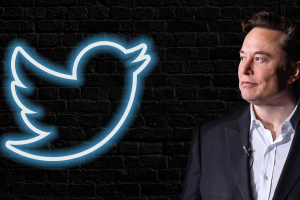- 🚗 Tesla Sweden employees express sentiments through a banner emphasizing they are fine without a union.
- 🤝 IF Metall protests against Tesla Sweden due to the lack of a collective agreement, arguing they could better fight for employees with one.
- 💬 Tesla Sweden claims its workers are compensated better than if they were unionized.
- 🎉 The banner, featuring a cartoon hedgehog, says “Thanks, it is good,” suggesting employees don’t see the need for a collective agreement.
- 📣 Tesla Sweden states over 90% of its employees are not participating in IF Metall’s protests.
- 🤨 IF Metall Ombudsman is skeptical about the origin of the banner, emphasizing that employees would be better off with a collective agreement.
- ⚠️ Union strike guard asserts protests are for the safety of Tesla Sweden’s employees, highlighting the importance of collective agreements as a floor for protection.
In the heart of a controversy between Tesla Sweden and trade union IF Metall, the voices of Tesla’s employees are resonating through a simple yet powerful medium – a banner. This banner, adorned with a cartoon hedgehog and the words “Thanks, it is good,” has become the emblem of the sentiments expressed by Tesla Sweden’s workforce. As we delve into this unfolding narrative, we unravel the layers of perspectives, arguments, and the overarching debate on the necessity of a collective agreement.
The Banner’s Message: Independence or Acknowledgment?
The banner, strategically displayed on the facility’s fence, encapsulates the employees’ assertion that they are content without a union. The symbolic use of the Tesla hedgehog, a nod to the company’s identity, delivers a clear message: gratitude for the current state of affairs. But does this truly represent the collective voice, or is it just a surface-level expression?
IF Metall’s Protest: Advocacy for Workers’ Rights
IF Metall’s protests stem from a fundamental concern – the absence of a collective agreement. They argue that having such an agreement in place would empower them to advocate more effectively for the rights and benefits of Tesla Sweden’s employees. This raises questions about the extent to which employees are aware of their rights and whether a collective agreement would indeed enhance their overall well-being.
Tesla Sweden’s Counterargument: Compensation and Autonomy
On the other side of the divide, Tesla Sweden contends that its workers are already compensated at a level that surpasses what they would receive under a union. The company asserts that its approach fosters a direct relationship between the employer and employees, allowing for more flexibility and autonomy. But is this perceived autonomy truly beneficial for the workers in the long run?
Unraveling the Skepticism: Who Owns the Banner?
IF Metall Ombudsman Dan Axelsson expresses skepticism regarding the origin of the banner, suggesting it might not be an initiative of the Tesla Sweden workers themselves. This skepticism opens a broader discussion about the dynamics between employees and management. Are the workers genuinely expressing their views, or is there an underlying influence shaping their narrative?
The Majority Stance: Over 90% Not Participating
Tesla Sweden asserts that over 90% of its employees are not participating in IF Metall’s protests, indicating a majority stance against unionization. This statistic raises questions about the factors influencing employees’ decisions and whether they feel adequately represented by both their employer and the union.
Union Strike Guard’s Perspective: Safety and Collective Agreements
Union strike guard Elin Mainhed emphasizes that the protests are conducted for the safety of Tesla Sweden’s employees. She underscores the idea that collective agreements serve as a protective floor, ensuring the well-being and rights of the workforce. This prompts a critical examination of the role and impact of collective agreements in securing the interests of employees.





